In addition to photography, I enjoy cooking and history. Amy Bizzari’s “The Civilian Conservation Corps Cookbook” allowed me to engage in all three activities and write about it for the Traveler.
When I lived on my own, in Texas, I didn’t do much cooking except for weekend slow cooker meals, the finished product of which I packaged up and saved for future lunches and dinners. Aside from the crockpot, I lived on grocery store frozen dinners. It was easier for me, at the time, since I cooked for nobody but myself. Twenty years later, after retiring and moving to Washington state to live with my sister and her youngest son, I assumed kitchen duties and now cook the majority of our meals. The thing about cooking is that it helps immensely to have an appreciative audience. This makes my chef role quite fulfilling and I’ve learned I really enjoy cooking!
My photographic and written contributions to the Traveler introduced me to the Civilian Conservation Corps (CCC or 3Cs) from walking the CCC-built paved trail along the South Rim of Grand Canyon National Park in Arizona, to driving the CCC-built Chisos Basin Road in Big Bend National Park in Texas, to exploring the CCC-built trails, museum, and caretaker’s house at Ginkgo Petrified Forest State Park, a National Natural Landmark found along the Washington state route of the Ice Age Floods National Geologic Trail.
While there are any number of books out there written by historians and former enrollees of the CCC, this book by Ms. Bizzari, whose own grandfather was a CCC alumnus, piqued my interest because it concentrated on a major component of the CCC encampments: the menus created and food prepared for and eaten by the enrollees. Anecdotal insets scattered throughout the book tell of life at CCC camps and the wonder of trying new foods (some enrollees had never seen or tasted a grapefruit) in addition to the delight at being able to eat all they wanted.
The book starts by introducing the reader to the Great Depression, an economic disaster beginning in 1929 and lasting about a decade. The Depression rendered rich people poor and poor people totally destitute. The combination of financial collapse and severe drought in the Midwest and Southern plains left a large portion of the U.S. population broke, homeless, jobless, and hungry. Homeless encampments (“Hoovervilles”) popped up, bread lines lengthened, and suicide rates increased.
Newly-elected President Franklin Delano Roosevelt (FDR) pledged to “make life better for all Americans,” proposing in 1933 the creation of the CCC to put to work hundreds of thousands of unemployed, single young men between the ages of 18 – 35. These men facilitated the building and maintenance of infrastructure, roads, and trails; tree and shrub plantings; telephone pole and line maintenance; and some firefighting throughout the U.S. in what are now state parks, national forests, and units of the National Park System. In return for such hard labor, enrollees were fed three meals a day (all they could eat), earned $30 a month ($25 of which went to their families back home), and were offered reading education, high school degree completion, and driving instruction, in addition to learning such on-the-job skills as cooking and auto repair. Some young men even met and married local girls while enrolled.
In addition to plenty of historical photos and a good dose of history – the majority focusing on CCC cooking and food – the author offers simple, hearty, easy-to-follow recipes. The book is divided into six chapters: Chapters One, Three and Five are devoted to family-sized breakfasts, lunches and suppers, desserts and holidays. Chapters Two, Four, and Six are large-batch (cooking for 100) portions of different recipes for the same menu subjects.
Cooks in the CCC made do with what they had on hand. Shelf-stable produce (e.g. canned beans, canned corn) was purchased by the Army Quartermaster Corps, perishable foods were mainly purchased from local food dealers near the CCC camps, and meat was purchased and underwent inspection by the Department of Agriculture or by Army officers trained for this job. Squirrel and rabbit occasionally caught by the enrollees also supplemented meal ingredients.
Speaking of meat, while there are a few vegetable-centered dishes such as the cabbage soup on page 104, most of these recipes incorporate some sort of animal protein. My sister bemoaned that fact until I reminded her the young men enrolling in the CCC were generally undernourished. Meat as protein was an important nutritional component of the day for building the health and strength needed by each enrollee, who burned an estimated 4,000 calories daily.
If you are not a red meat eater, I think substitutions could be made with some of these recipes like the Six-Layer Casserole, which calls for cooked ground beef but probably ground cooked turkey or chicken would work just as well.
While my sister does not have celiac disease, she nonetheless suffers from an intolerance to gluten. I was gratified to see some recipes were already gluten-free, but other recipes needed substitutions, such as gluten-free flour for regular flour and gluten-free spaghetti noodles for regular spaghetti noodles. Note: I did use regular flour for the two cake recipes I baked.
This cookbook has a few proofing glitches. It was not a big deal to me except for an issue with the Brunswick stew: the recipe omitted water/broth! I initially thought the moister ingredients might provide enough liquid to create a very thick stew, but after adding everything into the stockpot, I knew that was not going to work. Perhaps the recipe as the author received it came that way. I’m not certain Ms. Bizzari tried all these recipes before including them in the book, otherwise I think she would have noted the lack of liquid as an ingredient for this recipe. For the Brunswick stew, the CCC cooks would use either water or broth, so I added chicken broth since I had that on hand.
To date, I’ve tried six different recipes: Cabbage Soup, Brunswick Stew, Six-Layer Casserole, Lemon Cake with Lemon Glaze, and a Hershey’s Mocha Devil’s Food Cake with a cream cheese frosting from a different cake recipe in the book.
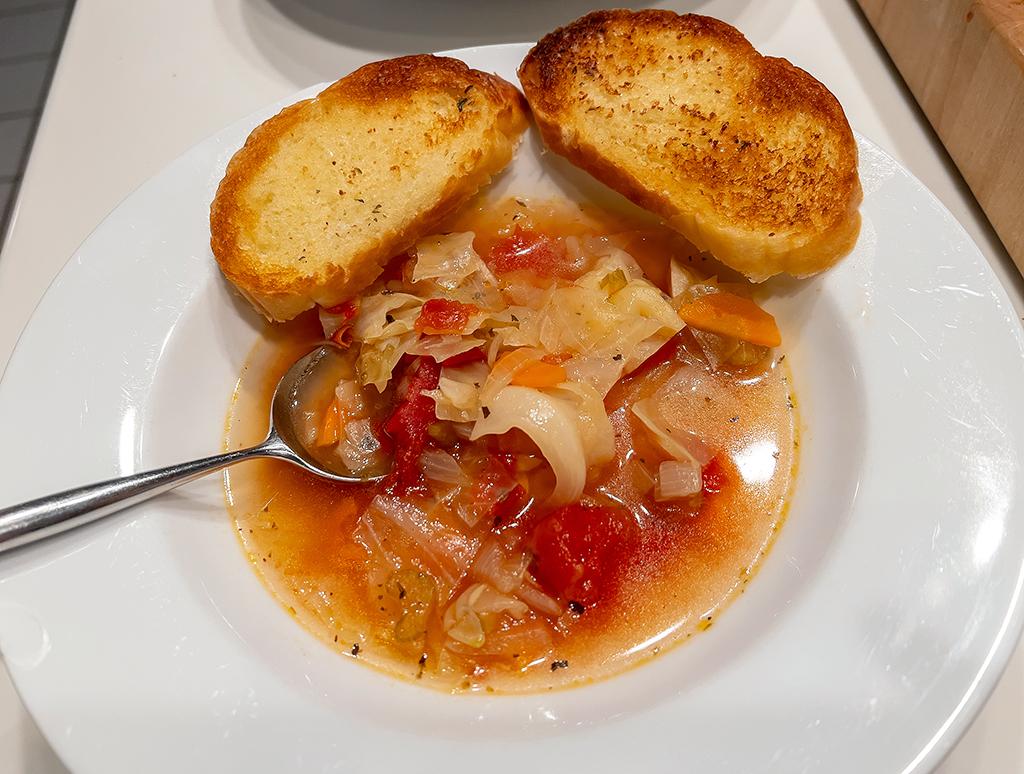
Cabbage Soup / Rebecca Latson
This is a lovely, flavorful soup to serve on a cold winter evening. It’s comforting and good for you at the same time. I supplemented the soup with broiled and seasoned sourdough toast. If you wanted a little meat in the soup, you could add cooked ground beef.
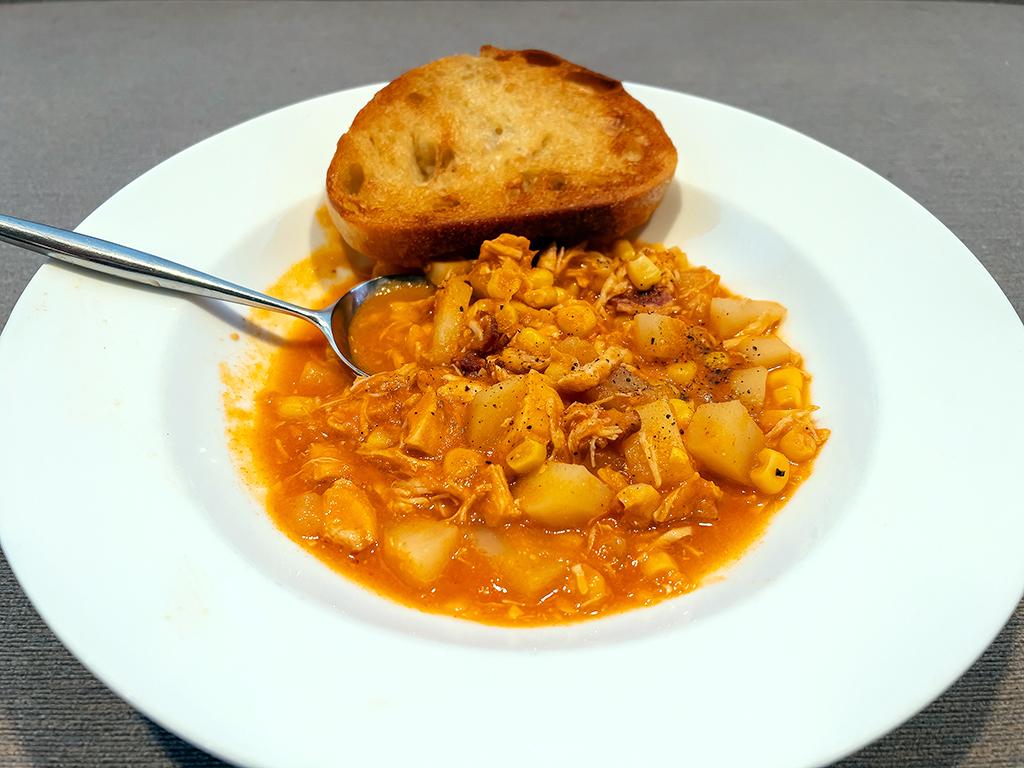
Brunswick Stew / Rebecca Latson
This Brunswick stew calls for potatoes instead of the usual lima beans, resulting in a tasty, hearty stew great for serving on a cold day. The recipe calls for chicken, but beef or pork may be substituted.
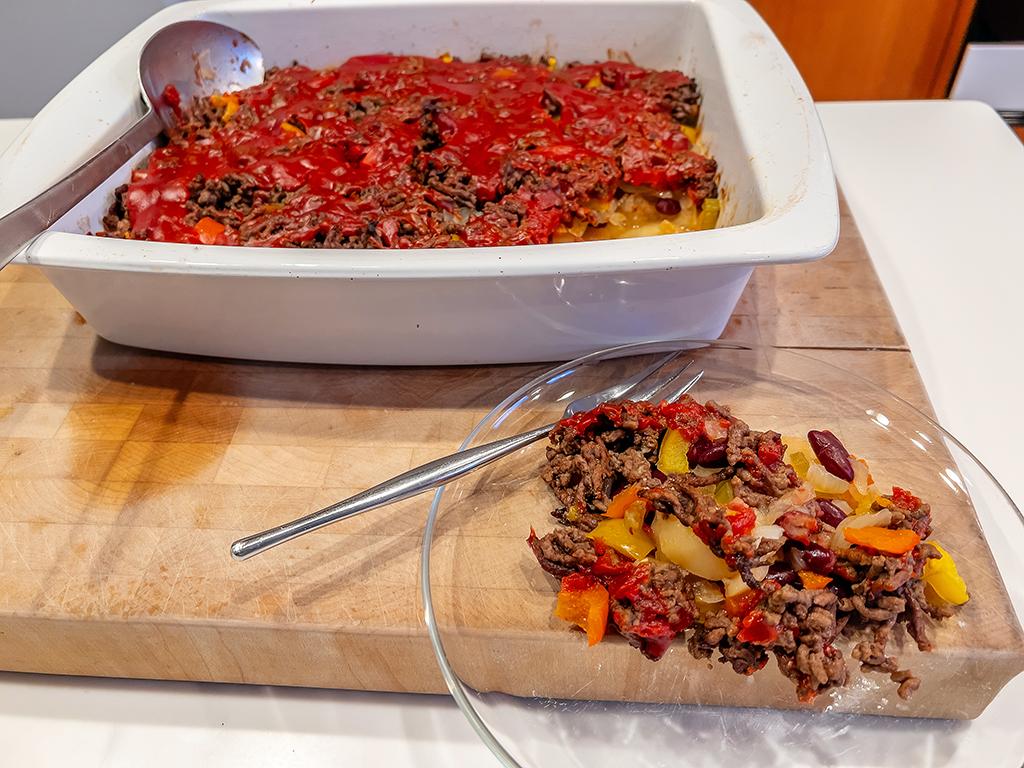
Six-Layer Casserole / Rebecca Latson
While the recipe does not call for greasing the 9 x 13 casserole dish to keep the food from sticking, I did use a cooking spray for an easier cleanup. That topping you see in the image is ketchup, an ingredient that works quite well. Both my sister and nephew raved about this casserole.
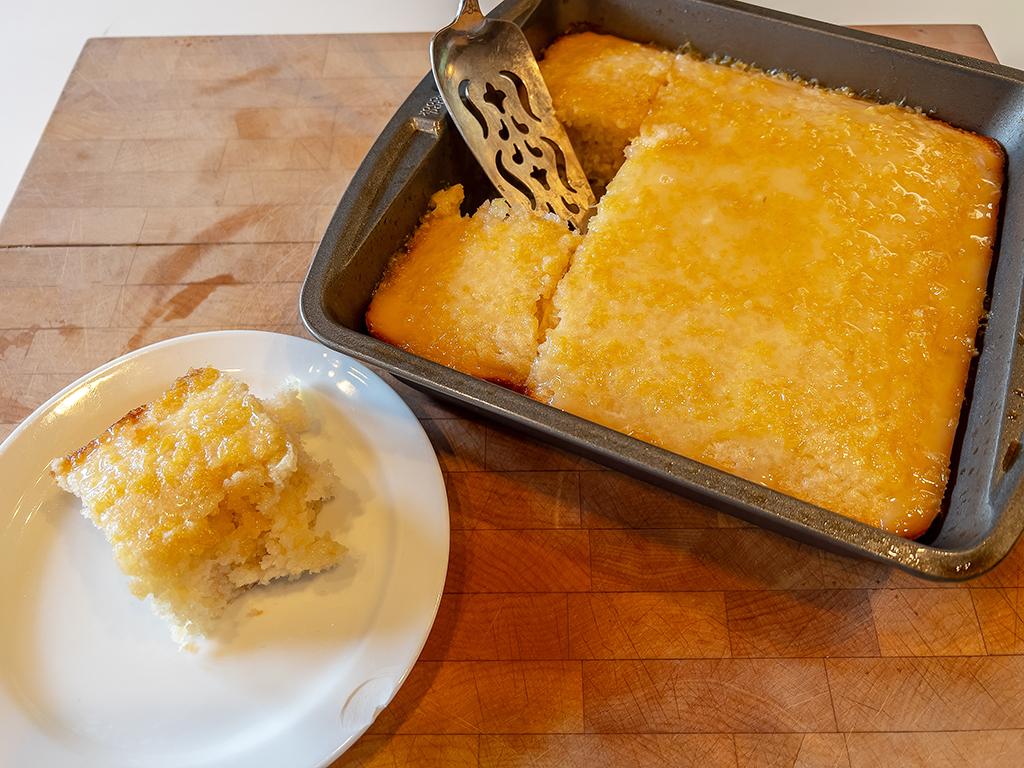
Lemon Cake with Lemon Glaze / Rebecca Latson
I found the lemon flavoring measurements in the recipe didn’t bestow much of a lemon tang to either cake or glaze. So, I used a little more lemon juice (freshly-squeezed) than what the recipe called for to give this cake and glaze a nice, lemony zing. I wasn’t precise in my measurements – it was more of an “add to taste.” Cooking spray prevented the cake from sticking to the bottom and sides. This is one recipe where you can lick the spoon and bowl because no eggs are used.
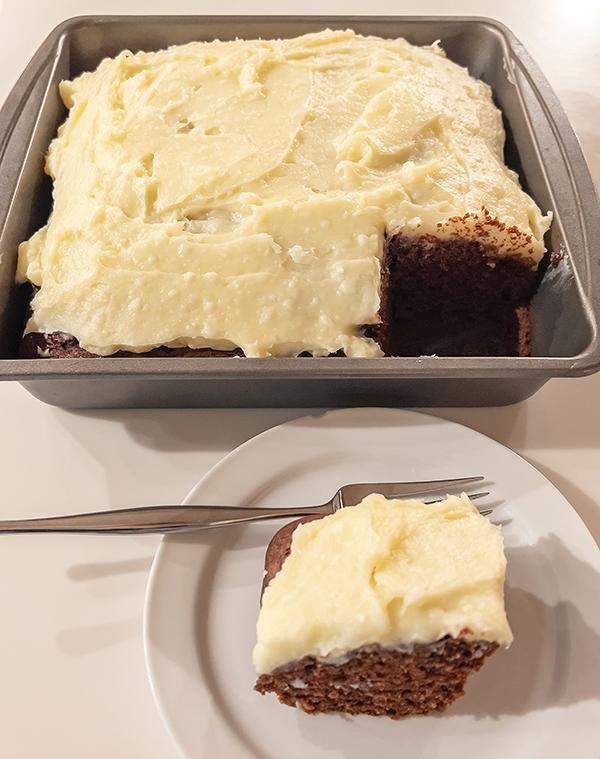
Hershey’s Mocha Devil’s Food Cake with Cream Cheese Frosting / Rebecca Latson
I made this cake for my youngest nephew’s birthday. I didn’t want a chocolate icing on the chocolate cake (too much chocolate, if there is such a thing), so I substituted the cream cheese frosting recipe used for the book’s Tomato Soup Spice Cake. The ingredient list was a little vague in terms of the kind of chocolate beyond Hershey’s brand (I used Baker’s because I couldn’t find Hershey’s baking bars in the stores I shopped); I didn’t know whether to use unsweetened, semisweet, or sweet baking chocolate and figured it was probably unsweetened chocolate.
If I can find even one recipe worthy enough for a repeat performance, then I consider that cookbook a “keeper.” Each recipe I tried from Amy Bizzari’s book turned out tasty enough for repeat cooking (I’ve already made the cabbage soup and lemon cake recipes twice), which means this book is a “keeper.” None of the recipes are what we, in this current day, would call “fancy,” but they are hearty, filling, and delicious, demonstrating the “can do” efforts by CCC mess hall chefs working hard to feed hard workers. As a matter of fact, I am contemplating fixing the 1930s Baked Mac and Cheese recipe for tonight’s dinner (using gluten-free noodles). Bon apetit!
Note: While this is a glowing review of CCC cooking and life at the encampments, things were not always so rosy, according to this Traveler article about the CCC at Isle Royale National Park. If you’d like to learn more about the CCC, click here and here.





